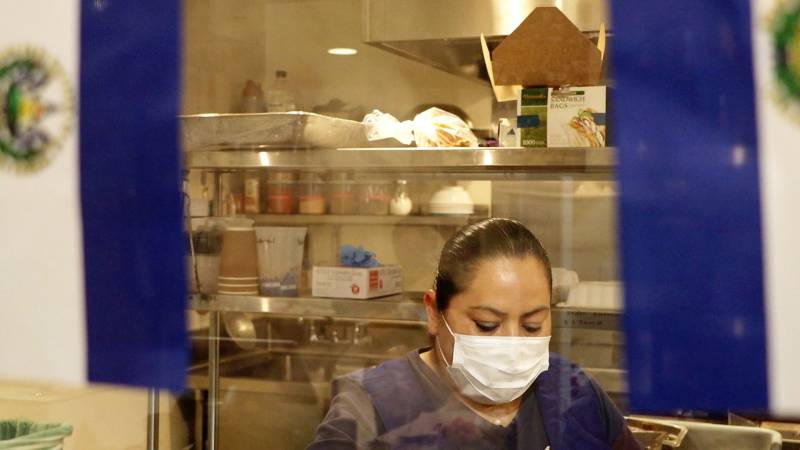Food transcends language, and for immigrants in a country where everything is new, food can help bridge that divide.
16 years ago, Maria del Carmen Flores founded Estrellita’s Snacks in the heart of the Mission as a food vending operation, selling a variety of Salvadoran antojitos like plátanos fritos and yucca and plantain chips in local bars and businesses.
Today, Maria’s daughter Estrella Gonzalez leads the business with her children, Estrella Natale Oceguera and Angel Acevedo. After waiting two years, Estrellita’s Snacks finally opened in La Cocina’s Municipal Marketplace alongside other small businesses led by women chefs and entrepreneurs. Though Maria del Carmen no longer works onsite at the restaurant, Estrella, Natale and Angel carry on her legacy.
In a bilingual conversation as part of KQED’s Mi Herencia event series, KQED en Español reporter Carlos Cabrera-Lomeli spoke with the two generations of Estrellita’s Snacks about perfecting plátano frying techniques, starting your own business as an immigrant entrepreneur, and lessons they learned from their family matriarch.
We’ve translated portions of this interview in Spanish and edited for clarity. Watch the original conversation on Facebook.
Carlos: Tell us about the moment Maria del Carmen decided to start Estrellita’s Snacks.
Estrella: I was carrying my daughter, Natale, when I got an intense craving for platanitos. So we went to the store and purchased about ten platanitos and she started frying them. But she ended up producing so many! As you know, el antojo is just a little craving—that’s all I wanted. She asked me what she should do with all the leftovers. Then, she bought a few Ziploc bags and went out to sell the rest. “Te animas a salir conmigo a caminar a La Misión to the bars,” she told me. “We’re going to sell them.”
Out we went, entering one bar after another, and continued through the night until we sold all of them. We ended up making a lot more than we invested in for a few plantains. At that point, she said she knew exactly what she was going to do.
Instead of buying 10 plantains, she decided to buy a case of plantains. Every afternoon we’d go out, each time with great results. “De aquí en adelante, este negocio se va a crecer,” she said. And with the help of us, her family, we’re continuing to do just that. Seguir adelante.
How did your mother go from street vending in the Mission to securing a spot in La Cocina’s first municipal marketplace?
When she began to put effort into making her business, she started informing herself, which was complicated because she didn’t (well, doesn’t) speak English. So she started asking a variety of people for help on how to open her own business. She’d say that while she didn’t speak English, she’d find help on how to get this or that. She asked so many people. Some people told her to go to City Hall for her permiso or business license. We worked out of and rented space in two restaurants before getting to La Cocina.
One day, someone told her about a spot that supported small businesses in the Mission, right there on Mission and Folsom. Out of pure curiosity, she started searching for it, and when she found it, she asked a young kid where the address to La Cocina was. And he was like, “Pues, allí enfrente,” and she said, “¿Cómo que enfrente?”
At that point, she realized that she lived directly in front of La Cocina. The same place that could help her start producing her business was right across the street from her home. All she had to do was cross the street, and there she was. Every day starting at 5 a.m., there she was at La Cocina. Thank god people there speak both English and Spanish and could help.



